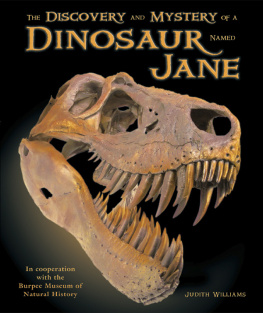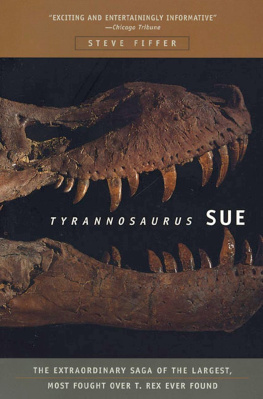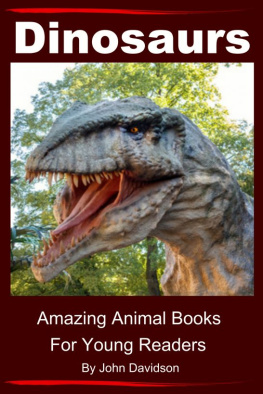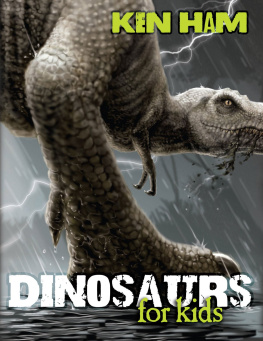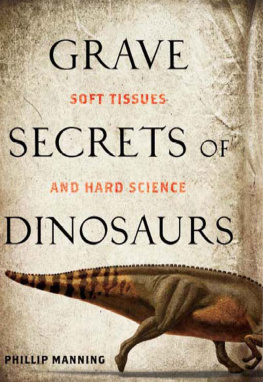THE DISCOVERY AND MYSTERY OF A DINOSAUR NAMED JANE
Digging in the badlands of Montana, scientists and volunteers from the Burpee Museum of Natural History have spent weeks hunting for fossils. On their last day of prospecting they make a great find: the toe bone of a meat-eating dinosaur! Could it be a Tyrannosaurus rex?
Go along on this exciting adventurefrom the dig site to the creation and opening of the museum exhibit, "Jane: Diary of a Dinosaur." Packed with photographs from the expedition and new museum exhibit, this true science adventure gives you a behind-the-scenes look at a new scientific discovery.
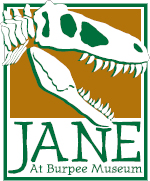
About the Author
Judith Williams is a full-time writer with a special interest in paleontology and science. She lives in Alberta, Canada, where she has dug for fossils alongside world-famous paleontologists. She is the author of eight other books by Enslow Publishers, Inc., including Discovering Dinosaurs with a Fossil Hunter as well as the I Like Weather! series.


For our friend Jane, in appreciation of her counsel and guidance in revealing the fascinating lost world of Jane the dinosaur.
JUNE 2001

The badlands of Montana are home to many fossils.
Mike Henderson checks his watch, tapping it with impatience. It is still early in the day, but in two days his team will be returning to Illinois. Every minute brings them closer to leaving, but further away from finding a dinosaur. Grabbing his backpack, Henderson climbs out of the SUV, along with the rest of his team.

Image Credit: Michael William Skrepnick
Hendersons job is to search for fossils. He organized this trip for museum workers and volunteers from the Burpee Museum of Natural History in Rockford, Illinois. After two weeks of prospectinghunting for fossilsthey have found little more than small bone scraps and some teeth. Everyone hopes to be lucky enough to find a complete skeleton, but realizes that such a discovery is rare.
The team members scatter across the barren landscape. They are exploring a new area of the badlands in the Hell Creek Formation of Montana. This rock bed is known for its fossils. Henderson heads toward a hill, dry grass and shrubs crackling under his hiking boots. There are no trees, no shade, and no water. Henderson takes off his hat to wipe the sweat from his forehead. He walks quickly through the open flat area between hills because there is little hope of finding fossils on the ground there. Only the hillsides hold the evidence that dinosaurs once roamed these lands.

Image Credit: 1999 Artville, LLC.
As the day passes, the chatter on the walkie-talkies increases. Scott Williams of the Burpee Museum smiles as the reports are radioed to him. This is turning out to be a good day for prospecting. Before long, discoveries include dinosaur leg and rib bones and a Triceratops horn. Scott Williams answers a radio call from volunteers Bill Harrison and Carol Tuck. Sensing the excitement in their voices, Williams turns and spies the pair in the distance. He hurries toward them, his rapid footsteps leaving dust hanging in the hot air. Minutes later Williams joins Harrison and Tuck at the base of a tall slope. A fossil sits on a little ledge of sandstone with other bones nearby. Williams picks up the oddly shaped fossil, recognizing it as a toe bone. Behind it, there is another foot bone with the end broken off. He looks at it closely with wonder. The bone is hollow. Williams smiles widely at his team members. A hollow bone means a meat-eating dinosaur!

Mike Henderson
Almost a mile away, Mike Henderson steps carefully around a spiny cactus, closely checking for any sign of a dinosaur bone. Suddenly his walkie-talkie crackles, and the voice of Scott Williams breaks the silence around him. Williams radios that two volunteers have made a very interesting find. They agree to meet at the SUVs later in the afternoon.
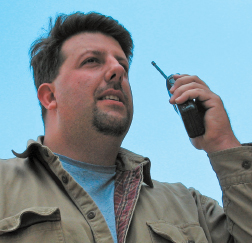
Scott Williams
The sun is low in the sky when the tired team assembles. Scott Williams holds out the fossil to Mike Henderson. As he handles the toe bone, the paleontologists eyebrows raise in surprise and delight. He nods to Williams. No doubt about it. The hollow bone confirms the toe came from a meat-eating dinosaur. It is too late in the day to investigate the site. As they drive away, everyone wonders what other bones might be hidden in the hillside.

The toe bone was the first fossil found from the mystery dinosaur.
The next day, Henderson crouches down to look at the ledge where Harrison and Tuck found the toe bone. He can see more still buried in the hillside. Farther along the slope, more bone and part of a dinosaur leg are partly visible.
Henderson walks beside the slope deep in thought. As his fingers trace the path of bones, a picture forms in his mind. If a dinosaur were lying down, its feet would be down at one end, and the leg bones would continue farther inside the hill. Henderson looks back and forth along the hill, too excited for words. The position of the bones could mean an entire dinosaur skeleton is lying right there in the hill beside them.
The paleontologist takes a second look at the toe bones. These bones are too small for a full-grown tyrannosaur, Henderson says. It might be a Struthiomimus. Both tyrannosaurs and Struthiomimus are meat-eating dinosaurs, known as theropods. Despite his doubts, he knows with certainty that the bones belong to a theropod dinosaur. Henderson sighs loudly. As exciting as finding a dinosaur might be, there is a problem.
The museum has a permit to collect fossils exposed on the ground, but not any bones that require major digging. A large digging site would require another permit. There is no time to get one because they will be leaving for Illinois the next morning. The prospecting trip is over. Henderson tells the team they must leave the dinosaur in the hill. Everyone starts talking at once, concern in their voices. What if someone else finds this place and digs up the skeleton before they can come back?
The team removes the smaller exposed foot bones and buries the spot under rocks and dirt. This will hide their find from others and also protect the fossil from the weather until they return. The team members walk to the SUVs with one last, troubled look back at the slope. Are all the bones from a single theropod? Maybe even a tyrannosaur? The crew will have to wait another year to find out.

